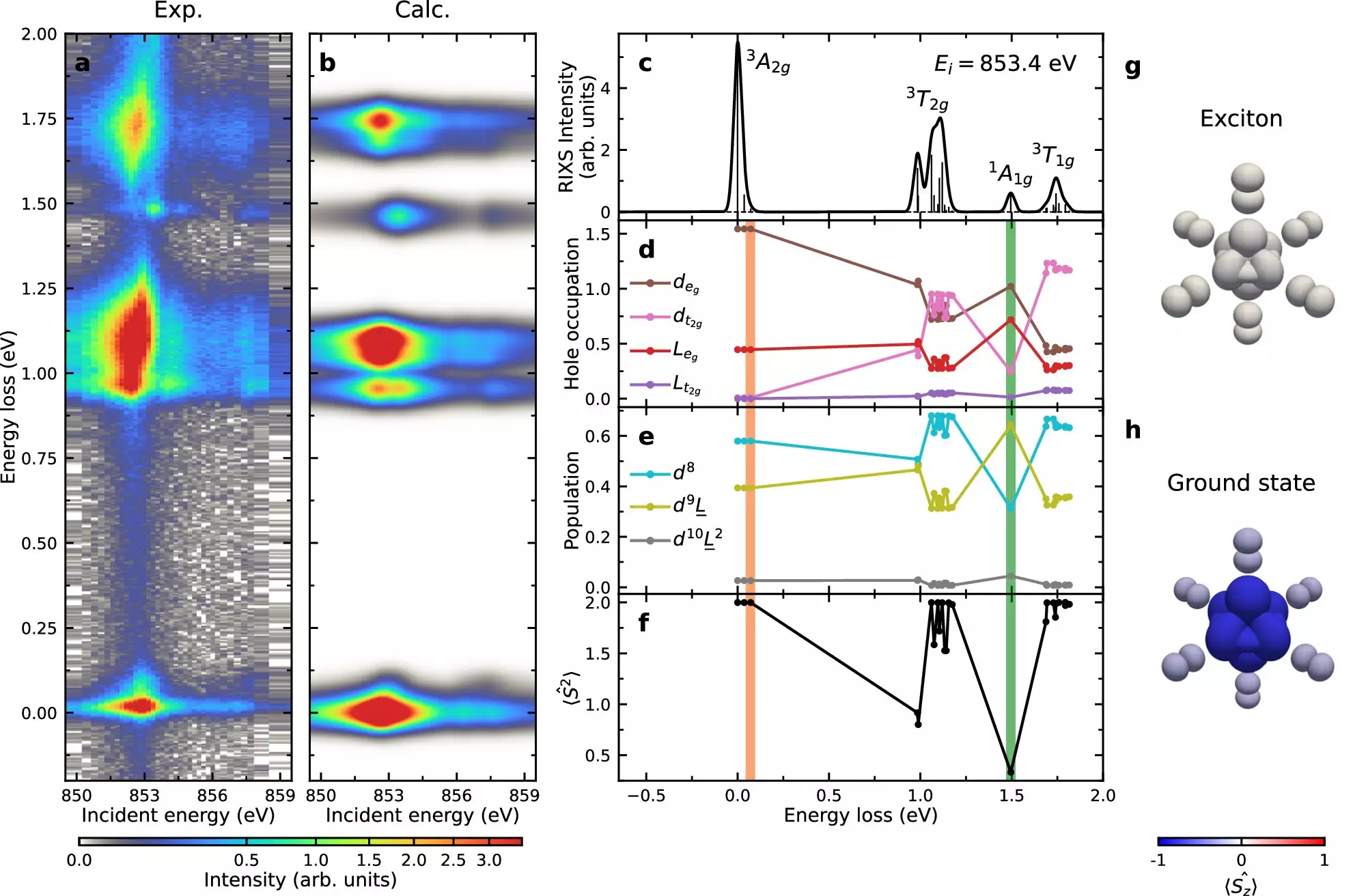A recent study conducted by scientists at the U.S. Department of Energy’s Brookhaven National Laboratory has shed light on the formation and behavior of excitons in a class of materials known as van der Waals magnets. These microscopic particle-like objects, consisting of an electron and a hole, have been observed in the crystalline material nickel phosphorus trisulfide (NiPS3) using advanced X-ray techniques.
Excitons in NiPS3 have attracted significant interest due to the potential link between their behavior and the underlying magnetic structure of the material. The researchers utilized resonant inelastic X-ray scattering (RIXS) at the Soft Inelastic X-ray Scattering (SIX) beamline at NSLS-II to uncover the structure and motion of excitons in NiPS3. This cutting-edge experimental station allowed them to study the electronic properties of the material with high resolution.
The team discovered that the formation and propagation of excitons in NiPS3 are governed by the Hund’s exchange interaction, a fundamental physics principle related to electron spin configurations. This interaction provides the energy required for excitons to form in the material. Additionally, the researchers found that excitons disperse through the crystal in a manner similar to a type of spin disturbance known as a “double-magnon,” highlighting the intertwined electronic and magnetic behaviors in van der Waals magnets.
As instrumentation and techniques like RIXS continue to advance, the researchers anticipate that even more detailed measurements of NiPS3 and excitons will be possible in the future. Postdoctoral researcher Wei He, the first author of the study, expressed optimism about the potential for further research and discoveries in this field.
The study conducted at Brookhaven National Laboratory represents a significant step forward in understanding excitons in van der Waals magnets, particularly in the context of NiPS3. By unraveling the complex interplay between excitons and magnetism, the researchers have laid the groundwork for future investigations into the unique properties of these materials. Excitons hold great promise for the development of new technologies based on magnetism, potentially leading to advancements in information storage and other fields.


Leave a Reply
You must be logged in to post a comment.